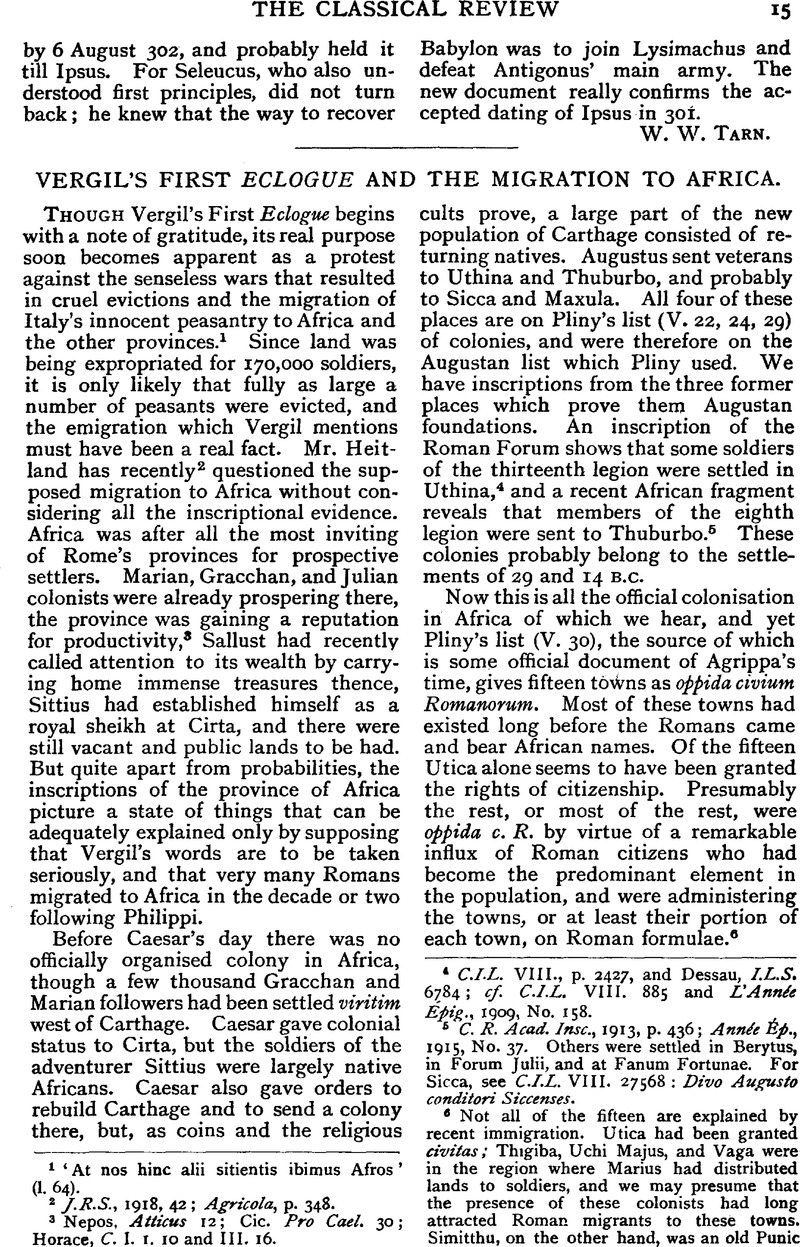No CrossRef data available.
Article contents
Vergil's First Eclogue and the Migration to Africa
Published online by Cambridge University Press: 27 October 2009
Abstract

- Type
- Review Articles
- Information
- Copyright
- Copyright © The Classical Association 1926
References
page 15 note 1 ‘ At nos hinc alii sitientis ibimus Afros ’ (1. 64).
page 15 note 2 J.R.S., 1918, 42 ; Agricola, p. 348.
page 15 note 3 Nepos, Atticus 12; Cic. Pro Cael. 30; Horace, C. I. 1. 10 and III. 16.
page 15 note 4 C.I.L. VIII., p. 2427, and Dessau, I.L.S. 6784 ; cf. C.I.L. VIII. 885 and L'Année Epig., 1909, No. 158.
page 15 note 5 C. R. Acad. Insc., 1913, p. 436; Année Ép., 1915, No. 37. Others were settled in Berytus, in Forum Julii, and at Fanum Fortunae. For Sicca, see C.I.L. VIII. 27568 : Divo Augusto conditori Siccenses.
page 15 note 6 Not all of the fifteen are explained by recent immigration. Utica had been granted civitas; Thigiba, Uchi Majus, and Vaga were in the region where Marius had distributed lands to soldiers, and we may presume that the presence of these colonists had long attracted Roman migrants to these towns. Simitthu, on the other hand, was an old Punic town that had grown up near the famous Numidian marble quarry. After the fall of Carthage the quarry was little used until Augustan architects began to call for the marble again, and it was doubtless these quarries which attracted enough Romans to make the town predominantly one of citizens. Of the others we know very little.
page 16 note 1 Klio, 1908, 457 f.
page 16 note 2 The assumptions of Kornemann (Philologus, 1901, p. 413) are based upon incomplete data.


